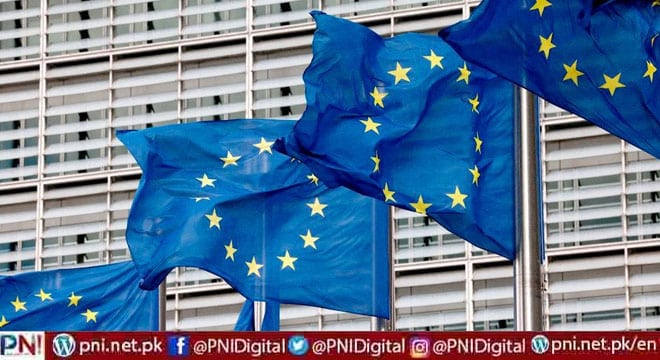Paris, Feb 2 (AFP/APP): The European Union, which holds a summit with war-battered membership candidate Ukraine in Kyiv on Friday, has gone through several waves of expansion in the past 50 years.
Four months after Russian tanks rolled into Ukraine last year, the 27-nation bloc accepted Ukraine, along with its neighbour Moldova, as candidates in June 2022.
The decision is the first step on the way to membership negotiations, which usually last years.
But Ukraine is impatient. Ahead of the summit Prime Minister Denys Shmygal said that by staging the top-level meeting in Ukraine, Europe shows it “supports our rapid movement towards EU membership”.
– Several enlargements, one departure –
Founded in 1957, the European Economic Community (later renamed the EU) started out with six members — Belgium, France, Italy, Luxembourg, the Netherlands and West Germany.
In 1973, Britain, Denmark and Ireland joined, followed by Greece, Portugal and Spain in the 1980s.
In 1995, the bloc began expanding eastwards, admitting Austria, Finland and Sweden in a leap that gave it a shared border with Russia for the first time.
In 2004 came the “big bang” enlargement from 15 to 25 members, with eight ex-Communist Eastern European countries and two Mediterranean nations raising EU flags in one fell swoop.
In 2007, Bulgaria and Romania took the EU to 27 members and in 2013 Croatia became the 28th.
Britain became in 2020 the first member state to leave the EU, after a seismic 2016 referendum vote to quit the bloc, taking its members back down to 27.
– Eight –
The war in Ukraine has reignited the EU’s drive to expand into central and Eastern Europe.
In December 2022, Bosnia became the fifth Balkans nation to be given candidate status, following North Macedonia (2005), Montenegro (2010), Serbia (2012) and Albania (2014). Kosovo last year also applied but has yet to be given candidate status.
NATO member Turkey has been a candidate since 1999 and launched membership talks in 2005.
But Ankara’s relations with the EU have deteriorated sharply since 2016 due to President Recep Tayyip Erdogan’s crackdown on dissent in the wake of a failed coup. In 2019, the EU declared the negotiations had stalled.
Ukraine, whose European ambitions have fuelled two revolutions since 2004, and Moldova bring to eight the number of countries in the EU’s waiting room.
The two former Soviet republics were among six countries with which the EU formed an Eastern Partnership in 2009, trading closer economic and political ties for reforms.
The others were Armenia, Azerbaijan, Georgia and Russia’s ally Belarus, which later opted out.
Georgia last year applied for EU membership but has not yet been given candidate status.
– Years of negotiations –
Gaining full membership is a complex process which usually takes several years, as aspirants have to take on board the vast body of EU law.
While Finland was admitted in fewer than four years, it took the three ex-Soviet Baltic states of Estonia, Latvia and Lithuania nine.
But as Ukrainian President Volodymyr Zelensky said ahead of this week’s summit: “We are waiting for news for Ukraine.”
Follow the PNI Facebook page for the latest news and updates.








